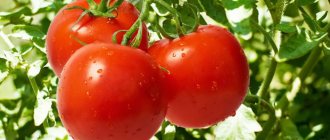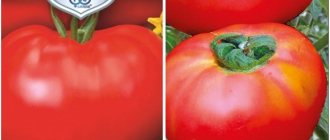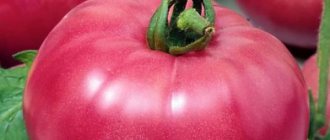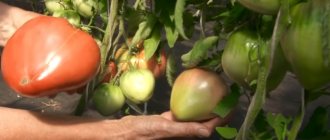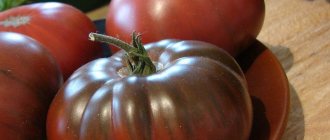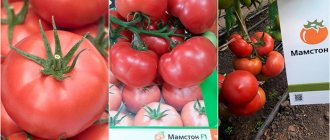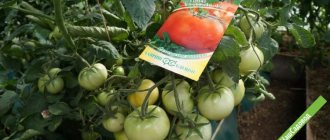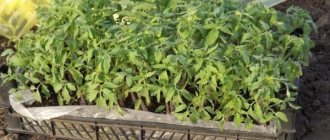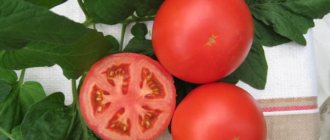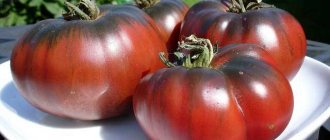Characteristics and description of the tomato variety Olya with a photo indicate its high yield, unpretentiousness in cultivation and excellent taste. According to reviews from summer residents, such a vegetable can be grown in any conditions, both outdoors and in a greenhouse. According to the description and characteristics, as well as reviews from gardeners, the Olya tomato variety (photo) is a hybrid. Its final maturation occurs approximately 60-70 days from the moment the seedlings are planted in the ground. If you follow all the principles of care and planting correctly, you can get a wonderful harvest in a season.
Characteristics and description of tomato
Olya variety tomatoes are a relatively young plant that was bred by breeders less than 15 years ago. The vegetable is a hybrid, therefore it includes many advantages, which allows it to be planted in any area with different weather conditions. Since the plant is not at all whimsical, it is not afraid of low and high temperatures.
In warm climates, tomatoes can be grown twice a year. And if planting is carried out in a greenhouse, then you can eat fresh vegetables all year round.
The characteristics of the tomato variety Olya are as follows:
- The bushes of the plant are determinate, their height often reaches 100-120 cm. The spreading of the stems is moderate, there are few leaves. They have a feathery shape, medium size with a pleasant light green tint.
- According to the duration of fruit ripening, this plant is classified as early ripening. The crop can be harvested after 105 days from the date of planting the seeds.
- The Olya variety tomato is characterized by its own characteristics, one of which is the formation of three clusters at once. They ripen together, so the yield is very high.
- In appearance, the fruits of the Olya variety tomato are bright red in color. An unripe tomato has a green tint. The shape is usually round with slight flattening. The size is average, the diameter of the fruit does not exceed 7 cm.
According to reviews from summer residents and gardeners, it was found that fruits grown on one bush are all similar in shape, color and are characterized by the same weight.
The plant is not afraid of temperature changes and tolerates many diseases well.
Tomatoes are particularly resistant to mosaic, nematodes, fusarium and some other dangerous diseases. Note! The weight of the fruit can reach up to 140 g, and with good care, the weight of the tomato fluctuates around 180 g.
Tomato Olya
The universal hybrid tomato variety Olya is the result of French selection. The originator is Vilmorin. However, according to other sources, it was bred in Russia by biologists of the All-Russian Research Institute of Vegetable Growing.
It shows its best performance when grown in low greenhouses, even without heating. In the southern regions, the variety grows well in the open air. It is becoming increasingly popular among farmers, because its ultra-early ripening and beautiful marketable fruits are highly valued in the fresh produce market.
Description
Olya tomatoes are medium-sized, leveled, weighing 160-170 grams. They are round, bright red in color, with smooth and shiny skin. Particularly noteworthy are such characteristics as increased resistance to cracking, as well as excellent transportability, like the Bobcat F1 tomato.
The pulp contains 4-6 seed chambers. The taste is sweet and sour, good, especially for an ultra-early hybrid form. Ripening occurs 90-100 days after emergence.
The purpose is wide, Olya is delicious in both fresh salads and canned food. Keeping quality and transportability are decent.
Plants are determinate or even super-determinant, medium-sized. Their height reaches 100-120 centimeters. The bushes are not standard, with a weak stem, short internodes and slight branching. One specimen produces up to 15 clusters, each containing 7-9 tomatoes. It is noteworthy that 3 brushes are formed at the same time.
| Color | red |
| Weight | 160-170 g |
| 4,7 / 5 | |
| 2.5-3 kg |
| type | determ. |
| 1.0-1.2 m | |
| Term | 90-100 days |
| above average |
Productivity and cultivation
The yield is high and stable, about 2.5-3.0 kilograms per bush. The best reviews concern the Olya F1's endurance in adverse weather conditions. Unlike other varieties, it sets fruit both during cold weather and during drought. Tolerates low light levels.
Resistance is above average; plants successfully resist cladosporiosis, tobacco mosaic virus and fusarium. But brown spot, rot and late blight can harm plantations. Among the pests that can be dangerous are mole crickets, whiteflies and wireworms.
Advantages and disadvantages
The Olya tomato hybrid has many advantages and almost no disadvantages. The only negative quality is its high growth, which requires the use of supports and better tying of plants during growth.
The benefits include the following:
- Rich yield.
- Good tolerance to temperature changes.
- The plant grows well in areas where there is a lack of sunlight.
- Tomato has excellent resistance to many dangerous diseases.
- Excellent taste of the fruit.
- It is characterized by good fresh storage and high marketability.
Advantages and disadvantages
The following positive qualities of this tomato should be noted:
- the bushes are compact in size;
- moderate number of stepchildren;
- good immunity, thanks to which plants are not susceptible to diseases and pest attacks;
- tomato Olya calmly tolerates spring cold snaps;
- high resistance to periods of drought and heat;
- this tomato is suitable for growing in open and closed ground;
- bushes of this variety do not require special care;
- beautiful appearance of ripe tomatoes;
- the harvested crop tolerates transportation well at any distance;
- possibility of long-term storage of the harvested crop;
- excellent taste of ripe tomato Olya;
- the harvested crop is of universal use.
According to reviews from vegetable growers, this tomato has no obvious disadvantages.
Growing rules
The amount of tomato harvest largely depends on compliance with growing techniques and proper care. Therefore, before planting, you should definitely prepare the soil, sow the seeds on time and plant the seedlings in a greenhouse or open ground.
Soil preparation
When planting tomatoes of the Olya variety, great attention should be paid to the quality of the soil. This vegetable prefers loose, light soils that have good breathability and contain a sufficient amount of mineral and organic compounds.
To prepare the correct substrate for planting tomato seeds, you need to mix the following components: peat, wood ash, sawdust, eggshells, greenhouse soil and superphosphate.
Before using sawdust, it is recommended to first hold them in hot water and then douse them with a urea solution.
The resulting mixture is laid out in special boxes or plastic containers.
Note! Containers and other containers where tomato seeds will be planted must have holes in the bottom so that the substrate is enriched with oxygen and moisture does not stagnate.
Growing seedlings
Tomato seeds are planted in soil prepared in advance and laid out in boxes, as follows:
- The soil is pre-moistened with water.
- Make small furrows, maintaining sufficient spacing between each other.
- Seeds are placed individually in the resulting furrows; it is not recommended to sow heavily, since the plants will be crowded and they will simply stretch out.
- Cover the furrow with soil.
The first shoots will appear in 10-12 days. Watering the planting is carried out as necessary.
Planting seedlings in open ground
After the sprouts have sprouted and become stronger and the weather is warm outside, they begin planting the seedlings in open ground. This usually occurs at the beginning of June. Planting is carried out using the following technology:
- In pre-loosened soil, shallow holes are dug with an interval of 30 cm between them and 50 cm between rows.
- The holes are moistened with water and the seedlings are immersed in them until the roots are completely hidden. Many summer residents recommend immersing plants to half their height and forming a bush of 2 sprouts.
- The breasts are covered with dry soil and watered again. The amount of water is calculated independently, the main thing is not to overfill it so that rot does not occur.
Agrotechnology
It is necessary to grow this variety of tomato through seedlings, since otherwise the plant will not have time to ripen. The soil for seedlings is prepared separately:
- 1 part sawdust;
- 1 part peat;
- 2 parts greenhouse soil.
The composition is poured with boiling water and urea solution. It is recommended to add crushed eggshells, a half-liter jar of ash and a couple of spoons of superphosphate to the mixture bucket. Then it must be mixed and poured with a hot solution of potassium permanganate, after which the soil can be used to plant seeds. It is recommended to plant the seedlings and begin hardening them a few weeks before planting, taking the plants out onto the balcony or terrace.
See also
Description of the tomato variety Aurora and its characteristicsRead
Sowing is done in March, and in May, after the end of frost, plants can be planted in the ground at the rate of 4 bushes per square meter. Growing is possible both in open ground and in greenhouses. During the growing process, it is necessary to fertilize, which will allow you to obtain maximum yield and treat the crop from pests.
Tomato can become infected with the following diseases:
- rot;
- late blight;
- brown spot.
Solutions of drugs such as Barrier, Zaslon, Epin and copper sulfate will help protect against these diseases.
Rules of care
For intensive and good growth, as well as fruit formation, the Olya tomato variety needs timely and proper care. It consists of proper watering, hilling holes, getting rid of weeds, applying fertilizers, as well as controlling diseases and pests.
Watering the plant should be done once a day, preferably in the morning or evening. Water consumption is up to a liter per hole. However, when watering, you should definitely take weather conditions into account. If it is the rainy season, additional moisture is excluded and watering is carried out only when necessary, in order to prevent rotting of the tomato.
It is also recommended to hill up the beds during heavy rains and after each watering. This will enrich the soil with oxygen, evenly distribute the liquid in the hole and destroy weeds.
It is advisable to apply fertilizers during the growth process of the Olya variety tomato 3 times per season. First, this is done after 10-12 days from the moment the seedlings are planted in open ground or a greenhouse or greenhouse. Afterwards, fertilizing is applied during the flowering period of the plants and during the setting of the fruits themselves. Organic and mineral compounds are used as fertilizer. These are humus, wood ash, superphosphate, ammonium nitrate, potassium fertilizers and specialized chemicals.
Pests and diseases are controlled through proper care and timely application of fertilizers. You can also use a solution of garlic, wormwood, or plant dill and garlic near tomatoes, since such plants have a specific smell and help repel certain pests.
Diseases and pests
Despite the fact that the Olya variety tomato has excellent resistance to a number of diseases, it can still be affected by the following diseases:
- Late blight is a common pathology in plants. Caused by damage to leaves and fruits. Small dark spots form on them. In the absence of treatment and prevention measures, the plant dies.
- Rot - often occurs in many plants. The main cause of the disease is considered to be excessive watering of the plant, which causes root rot. Afterwards, the fruits and the entire green part are affected.
- Brown spot - characterized by the appearance of small brown and black spots on the surface of fruits and leaves. As a result, the latter begin to dry out, curl and fall off. The plant dies if control measures are not taken in a timely manner.
Frequent and dangerous pests that attack tomato bushes include mole crickets, wireworms and whiteflies. They cause severe damage to the plant, as a result of which it begins to wither, the leaves dry out and fall off.
Note! An accessible method of controlling diseases and pests are traditional methods. So, you can use a solution of garlic, wood ash and other repellent plants. Or use specialized chemicals.
